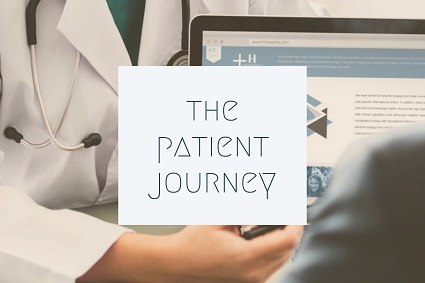Your cart is currently empty!

Healthcare Marketing: The Patient Journey
The patient journey, in healthcare, includes patient experiences of health issues and the touchpoints along the way — when the patient sees a doctor, is admitted to a hospital, or is given tests. Checking to see how each event is communicated and how the various caregivers interact can be eye opening for physicians.
A patient journey could look like this:
- Patient schedules an exam.
- Patient receives diagnosis.
- Treatment options are discussed.
- Treatment plan is created and appointment is set up.
- Payment is made.
- Appointment for treatment is kept and treatment is provided.
For healthcare marketers, this simple journey is actually filled with uncertainty.
- Patient schedules an exam — but how did the patient find our facility?
- Patient receives diagnosis.
- Treatment options are discussed — but what factors affect the patient’s decision?
- Treatment plan is created and appointment is set up — but how is follow-through achieved and how often are appointments missed?
- Payment is made — but how often does a patient “abandon the cart” at this point, and what factors affect the abandonment rate?
- Appointment for treatment is kept and treatment is provided — but what steps were taken to encourage follow through?
This patient journey, from the point of view of the healthcare marketer, should have some quicksand and white water added to the map.
Without acknowledging all the points where patients “abandon the cart” in the form of no-shows, failures to make follow up appointments, and noncompliance with treatment plans, healthcare marketers can’t use the information to improve marketing results.
Healthcare marketers can’t make good decisions about their resources without identifying the marketing touchpoints in between the stops on the official patient journey.
The buyer’s journey
Alongside the patient journey, which often leaves out all the marketing touchpoints, there is also the standard buyer’s journey.

This optimistically simple map shows our patient developing awareness, searching for information on his options, checking out some reviews, making a decision, paying, and strolling pretty quickly into our healthcare facility.
This map doesn’t take into account the doctor’s influences on the patient decision, or the insurance company’s influences. It doesn’t take into account the level of uncertainty patients often have as they search for solutions to their health problems. It doesn’t recognize the difference between buying orthopedic surgery and buying shoes.
Using only this information, healthcare marketers might just as well put up a billboard offering hip replacements at the freeway exit nearest the hospital and wait for impulsive drivers to stop by.
The patient’s buyer journey
Putting the two together with what we know about how patients seek and find information online, we see a different path.
- The patient experiences a health concern.
- He searches for information about that health issue — and finds clear, useful information at our practice blog.
- The patient narrows his search and looks for more specific solutions — once again finding clear answers at our practice website.
- He checks reviews and asks around on social media to confirm his impressions of our website, and calls to schedule an exam.
- The patient receives a diagnosis.
- Treatment options are discussed and the patient receives a brochure with a web address for more information.
- A treatment plan is created and an appointment is set up. Text reminders are scheduled to encourage the patient to follow through.
- Payment is made. Insurance is checked and costs are discussed fully.
- After texts are received and confirmed, appointment for treatment is kept and treatment is provided.
- Follow up email is sent to check on patient’s satisfaction and wellness.
Marketing resources in this example have gone toward a blog designed to answer patients’ — and prospective patients’ — questions. They’ve invested in social media.
A brochure was also developed. Since the brochure’s goal is to bring the patient to the website, it rarely needs to be updated. The website can be updated more cost-effectively, so the brochure is also more cost effective.
The clinic in our example has also invested in a simple texting system which helps reduce no-shows.
Be there every step of the way
Since 80% of Americans look for healthcare information online, according to the Pew Center for Research, it makes sense to invest healthcare marketing resources into your website and your online presence.
Text messages are the communication preference of more than half of U.S. patients. Appointment reminders have been shown to reduce appointment no-shows.
Using online communication rather than traditional media for marketing and patient experience improvements makes sense.
If you’re not sure how the patient journey and buyer journey align in your practice, we can help.
Call us at (479) 966-9761, or get in touch online to begin the conversation about our healthcare marketing services.
by
Tags:

Leave a Reply